Expert Guide to Selecting the Top Cockroach Repellent Solutions
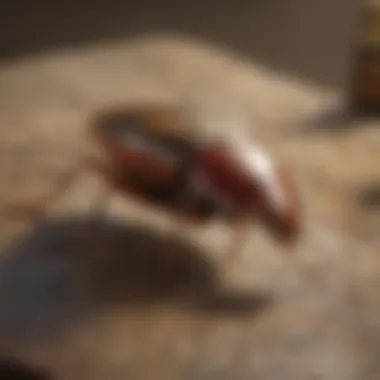
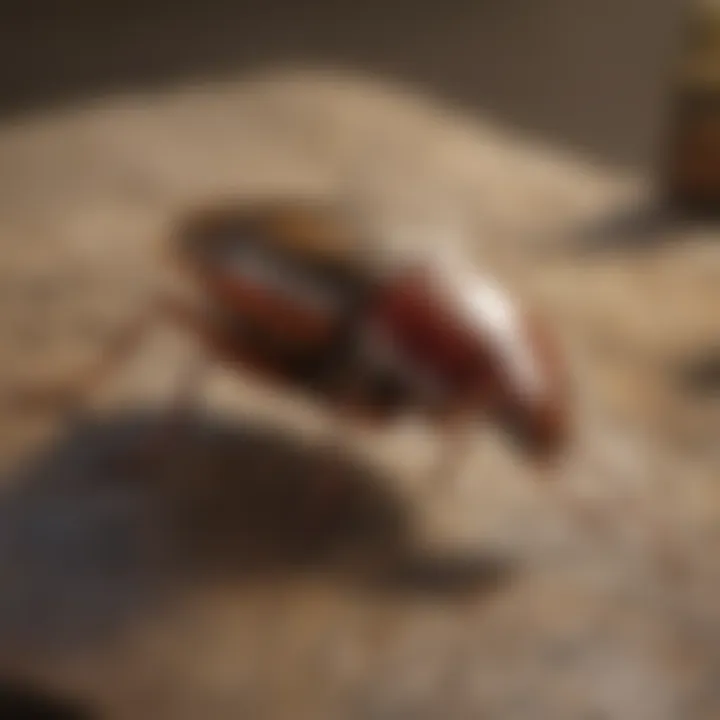
Preventive Pest Control Strategies
To ensure a pest-free environment, implementing preventive pest control strategies is crucial. Beginning with House Exterior Protection, it is essential to focus on sealing cracks effectively to prevent pests from finding entry points into your home. Clearing debris around the exterior of the house is equally important as clutter provides hiding spots for pests. Additionally, taking measures to prevent pests from entering your home through gaps in doors or windows is vital for effective pest control.
When it comes to Yard Maintenance, adopting essential yard care routines such as mowing the lawn regularly and keeping shrubbery trimmed can help keep pests at bay. It is also advisable to employ methods like removing stagnant water sources to prevent the breeding of pests like mosquitoes. Indoor Cleanliness plays a significant role in pest control, with expert cleaning tips and techniques including regular vacuuming, sweeping, and proper storage of food items to reduce the attractants for pests.
Garbage Disposal is another critical aspect of pest prevention. Applying efficient waste disposal methods, such as sealing trash bags properly and ensuring garbage bins are tightly closed, can deter pests from foraging for food on your property. Proper garbage disposal not only keeps pests away but also contributes to maintaining a hygienic living environment. Lastly, incorporating Other Pest Prevention Strategies like using natural repellents or setting up physical barriers can provide an added layer of protection against pests.
Identifying Pest Risk Areas
Before implementing pest control measures, it is crucial to identify potential risk areas in and around your home. Conducting a Moisture Prone Areas Inspection can help in recognizing damp conditions that attract pests. Taking preventive actions such as fixing leaky pipes and ensuring proper ventilation can help in minimizing pest infestations. Similarly, a thorough Crack and Crevice Inspection Guide is essential to identify access points for pests. Sealing off cracks and crevices using appropriate sealants can prevent pests like cockroaches and ants from infiltrating your home.
Inspecting Greenery for Pest Risks is another important step in pest control. Understanding how vegetation around your property can attract pests and implementing guidelines for maintaining a pest-free yard, such as pruning plants and removing overgrown vegetation, can significantly reduce pest activity. Additionally, being aware of Additional Pest Risk Areas such as attics, basements, and storage spaces is valuable in addressing hidden infestation spots.
Effective Pest Control Methods
When it comes to combating pests, employing effective pest control methods is key to ensuring a pest-free home environment. Natural Repellents for Pest Control offer a safe and eco-friendly alternative to chemical solutions. Essential oils, herbs, and plants like peppermint, lavender, and neem can act as natural repellents against common pests. Chemical Sprays are another option for targeted pest control, but it is crucial to use them safely and as directed to minimize health risks.
Pest Traps are effective solutions for capturing and removing pests like rodents and insects. Setting up traps strategically in areas of pest activity and regularly checking and disposing of trapped pests can help in controlling infestations. Biological Control Methods involve using natural predators like ladybugs or nematodes to manage pest populations organically. These methods are environmentally friendly and target specific pest species.
In addition to traditional approaches, exploring Other Pest Control Methods such as ultrasonic devices or sticky traps can offer innovative solutions for pest management beyond conventional means.
Understanding Cockroach Repellents
In this comprehensive guide to selecting the best cockroach repellent, understanding the various types of repellents available is crucial. By delving into the nuances of different repellent categories, such as Electronic, Natural, and Chemical Repellents, individuals can make informed decisions that align with their specific needs and preferences.
Types of Cockroach Repellents
Electronic Repellents
Electronic repellents utilize innovative technology to deter cockroaches from infesting indoor spaces. These devices emit high-frequency sound waves or vibrations that are unpleasant for cockroaches, driving them away without harming humans or pets. The key characteristic of electronic repellents lies in their non-toxic nature, making them a safe and environmentally friendly choice for households. While electronic repellents are praised for their efficiency in repelling pests, some users may find the constant noise generated by these devices bothersome.
Natural Repellents
Natural repellents harness the power of essential oils, plant extracts, and other organic ingredients to repel cockroaches naturally. Substances like peppermint oil, cedarwood, and citrus sprays are popular choices due to their pleasant fragrances and non-toxic properties. The unique feature of natural repellents is their eco-friendly composition, minimizing harmful impacts on the environment and inhabitants. However, the residual effectiveness of natural repellents may vary, requiring more frequent applications compared to chemical counterparts.
Chemical Repellents
Chemical repellents rely on synthetic compounds like boric acid, DEET-based products, and pyrethroids to eliminate and repel cockroaches. These formulations often deliver fast-acting results, effectively eradicating existing infestations. The key characteristic of chemical repellents lies in their potent insecticidal properties, ensuring immediate action against pests. Despite their efficacy, chemical repellents may pose health risks if not applied according to safety guidelines, raising concerns about prolonged exposure.
How Repellents Work
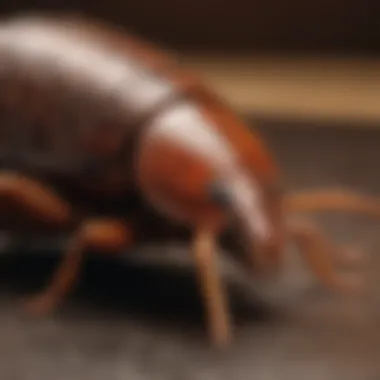
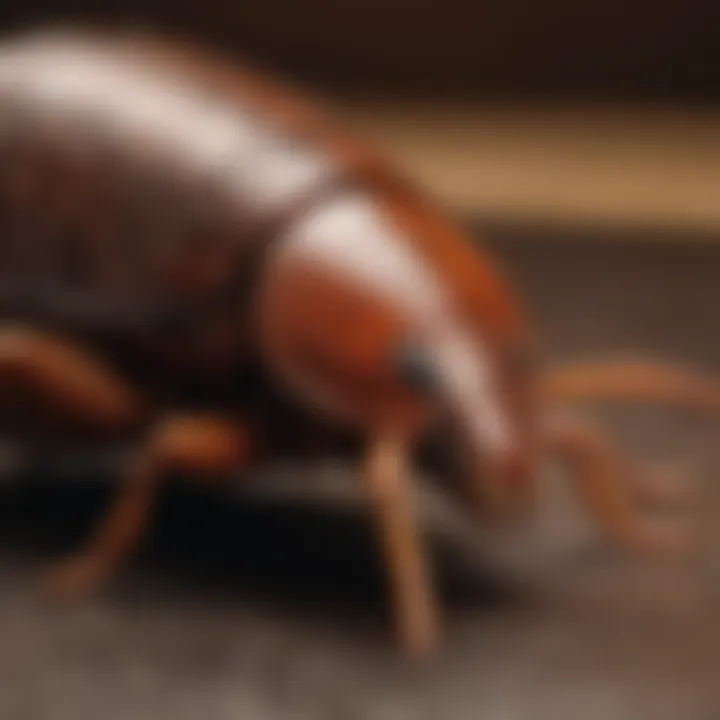
When exploring how repellents work, understanding the repellent mechanisms and effectiveness factors is vital for choosing the right solution tailored to your needs. Repellent mechanisms elucidate the scientific rationale behind each product's ability to repel cockroaches, whether through sensory discomfort or disruption of pests' chemical signals. Effectiveness factors encompass various aspects like application frequency, coverage area, and persistence, influencing the overall efficacy of repellents.
Importance of Choosing the Right Repellent
Selecting the appropriate repellent goes beyond efficacy, considering factors like health concerns, environmental impact, and long-term effectiveness. Prioritizing repellents with minimal health risks ensures the safety of household members, particularly children and pets. Assessing environmental implications helps in opting for eco-conscious solutions that reduce chemical exposure in living spaces. Long-term effectiveness signifies a repellent's ability to provide sustained protection against cockroach infestations, minimizing the need for frequent reapplications.
Factors to Consider
In the realm of choosing the most suitable cockroach repellent, various essential factors demand consideration in this comprehensive guide. These elements serve as the pillars that uphold the effectiveness, safety, and eco-friendliness of the repellents available in the market. Understanding the significance of these factors is vital to ensure a well-informed decision that aligns with your preferences and requirements. Evaluating aspects such as safety, non-toxicity, effectiveness, residual action, ease of use, and application methods will guide you towards selecting the optimal cockroach repellent tailored to your needs. By delving deep into these factors, you pave the way for a pest-free environment that safeguards your health and surroundings.
Safety and Non-Toxicity
Pet-Friendly Options
When considering cockroach repellents, the aspect of being pet-friendly stands out as a cornerstone in creating a safe indoor environment for both your loved ones and furry companions. Opting for repellents that are specifically formulated to be pet-friendly ensures that your pets remain unharmed while effectively deterring roaches. These formulations are meticulously designed to repel pests without posing any risks to animals, making them a popular and beneficial choice for households. The unique feature of pet-friendly options lies in their ability to provide protection against roaches without compromising the well-being of pets, offering a harmonious coexistence between pest control and pet care.
Child-Safe Formulations
Child-safe formulations play a crucial role in maintaining a secure and healthy living environment, especially in households with young children. Choosing repellents that are child-safe prioritizes the safety of your little ones while combating roach infestations. The key characteristic of child-safe formulations is their gentle yet effective nature, ensuring that children are safeguarded from harmful chemicals commonly found in traditional repellents. This choice not only protects children from potential skin irritations or ingestions but also promotes peace of mind for parents in knowing that their family's well-being is preserved. Understanding the advantages and disadvantages of child-safe formulations empowers you to make an informed decision that nurtures a safe and nurturing space for your children.
Effectiveness and Residual Action
Duration of Protection
When evaluating cockroach repellents, the duration of protection stands as a critical element contributing to the overall efficacy of the chosen product. Opting for repellents that offer long-lasting protection ensures continuous defense against roaches, reducing the frequency of reapplications. The key characteristic of duration of protection lies in its ability to extend the period between treatments, providing a convenient and efficient solution to pest control. This beneficial attribute translates to sustained effectiveness in repelling roaches over an extended period, enhancing the overall value and performance of the chosen repellent.
Elimination vs. Repellent
The decision between choosing an elimination-based or repellent-based cockroach treatment strategy impacts the long-term effectiveness of pest control measures in your living space. Understanding the key characteristics of these approaches is crucial in determining the most suitable option for addressing roach infestations. While elimination focuses on eradicating existing roach populations, repellents prioritize deterring roaches from entering your home. Each method presents its unique advantages and disadvantages, influencing the efficacy and sustainability of the pest control solution applied. By comprehensively analyzing the nuances of elimination and repellent strategies, you can tailor your approach towards achieving optimal results in managing roach infestations.
Ease of Use and Application
Convenience Factors
The convenience factors associated with cockroach repellents significantly contribute to the user experience and overall effectiveness of the chosen product. Opting for repellents that offer user-friendly features and application methods streamlines the pest control process, enhancing accessibility and efficiency. The key characteristic of convenience factors is their ability to simplify the application process, making it more manageable and straightforward for users. This beneficial aspect streamlines the pest control regimen, allowing for hassle-free and efficient repellent deployment in various household settings. Understanding the advantages and disadvantages of convenience-enhancing features equips you with the knowledge to select a repellent that seamlessly integrates into your lifestyle while delivering exceptional results in cockroach prevention.
Application Methods
The chosen application methods for cockroach repellents play a pivotal role in determining the ease of use and overall effectiveness of the product. Selecting repellents with versatile and effective application techniques ensures optimal coverage and penetration, maximizing the repellent's efficacy in deterring roaches. The key characteristic of application methods lies in their ability to adapt to different surfaces and environments, facilitating a comprehensive approach to pest control. This advantageous feature enables users to apply repellents with precision and efficiency, targeting roach-prone areas effectively while minimizing waste or inefficiencies in the application process. By exploring the unique features and application methods of various repellents, you can identify the most suitable option that aligns with your preferences and requirements, fostering a seamless and successful pest control experience.
Top Cockroach Repellents


When it comes to effectively dealing with cockroach infestations, selecting the right repellent is crucial. In this article, we delve into the top cockroach repellents available in the market. Understanding the specific elements, benefits, and considerations of each type of repellent will empower you to make an informed decision tailored to your needs and preferences.
Natural Repellents
Peppermint Oil
Peppermint oil is a standout natural repellent known for its potent aromatic properties that repel cockroaches. Its key characteristic lies in its ability to disrupt the insects' sensory cues, steering them away from your living space. This makes it a popular choice for eco-conscious consumers looking for a cruelty-free alternative with a pleasant scent. While peppermint oil effectively deters cockroaches, its volatile nature can require regular reapplication for sustained effectiveness.
Cedarwood
Cedarwood features prominently as a natural cockroach repellent due to its strong aroma that cockroaches find repulsive. Its key characteristic lies in its long-lasting residual action, making it an enduring choice for pest control. This natural option is favored for its organic composition and non-toxic properties. However, cedarwood's effectiveness may vary depending on environmental factors like humidity levels.
Citrus Sprays
Citrus sprays harness the power of citrus extracts to repel cockroaches effectively. The key characteristic of citrus sprays is their dual functionality as cleaning agents and repellents, adding value to households seeking multi-purpose solutions. This choice is ideal for those preferring a fresh, clean scent while deterring pests naturally. However, citrus sprays may need frequent application in high-traffic areas to maintain their efficacy.
Chemical Repellents
Boric Acid
Boric acid stands out as a potent chemical repellent that disrupts cockroach nervous systems upon contact, leading to their eventual demise. This key characteristic makes boric acid a popular choice for targeting persistent infestations with its lethal yet low-toxicity formula. However, precautions are necessary when using boric acid in homes with pets or children due to its potential health risks if ingested.
DEET-Based Products
DEET-based products are known for their powerful repellent action against various insects, including cockroaches. Their key characteristic lies in their longevity, providing extended protection against pests in both indoor and outdoor settings. Consumers value DEET-based products for their proven efficacy in repelling a wide range of insects. However, individuals with sensitive skin may need to exercise caution due to potential skin irritations.
Pyrethroids
Pyrethroids are synthetic chemical compounds that mimic natural pyrethrins found in chrysanthemum flowers, offering a broad-spectrum insect-repelling solution. Their key characteristic is their fast-acting neurotoxic effects on target pests like cockroaches, ensuring quick knockdown of infestations. While pyrethroids are praised for their rapid action, prolonged exposure can lead to pest resistance, necessitating rotation with other repellent types for sustained effectiveness.
Electronic Repellents
Ultrasonic Devices
Ultrasonic devices utilize ultrasonic sound waves to disrupt the nervous system of cockroaches, driving them away from the area of deployment. Their key characteristic lies in their non-intrusive operation, creating a sound barrier that repels pests without disturbing humans or pets. This technology-driven solution is popular for its plug-and-play convenience and environmentally friendly attributes. However, their effectiveness may vary based on room size and obstacles that could obstruct the sound waves’ propagation.
Electromagnetic Repellers
Electromagnetic repellents emit electromagnetic pulses that interfere with pests' biological functions, prompting them to seek refuge elsewhere. The key characteristic of electromagnetic repellers is their continuous operation, providing uninterrupted protection against cockroach incursions. This low-maintenance choice appeals to consumers looking for a hands-off approach to pest control. While electromagnetic repellents offer long-term benefits, their efficacy can be influenced by the presence of electronic devices that may interfere with the emitted signals.
DIY Repellent Solutions
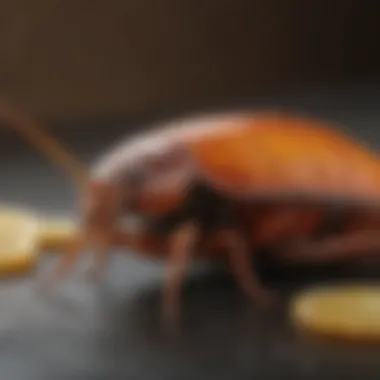
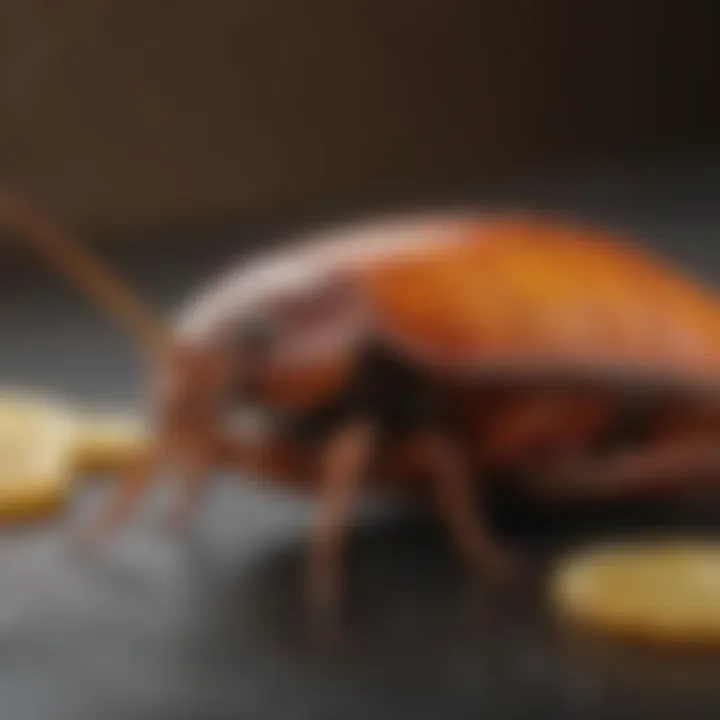
In the realm of cockroach repellents, a crucial aspect worth exploring is the realm of DIY repellent solutions. These homemade remedies not only offer a natural and chemical-free alternative but also provide a sense of control over the ingredients being used to deter these pesky pests. DIY repellent solutions enhance the overall efficacy of pest control strategies by incorporating everyday household items. They align perfectly with the eco-conscious mindset of homeowners seeking safer, greener alternatives to commercial pesticides. A significant benefit of DIY repellents is the customization it allows, tailoring the solution to specific needs and preferences. It opens up a world of creativity where individuals can experiment with various blends to find the most effective repellent for their homes.
Homemade Recipes
Essential Oil Blends
Essential oil blends stand out as a cornerstone ingredient in various DIY cockroach repellent solutions. These aromatic oils, extracted from plants, carry potent properties that repel roaches effectively. With their natural fragrance, essential oils not only deter pests but also leave behind a pleasant aroma, unlike the harsh chemical odors of conventional repellents. What makes essential oil blends a popular choice for DIY repellents is their versatility. Whether using oils like lavender, peppermint, or tea tree, each comes with unique properties that can target different types of pests. The non-toxic nature of these oils ensures safety for both residents and the environment. However, it is crucial to note that essential oil blends may require frequent reapplication compared to chemical repellents.
Baking Soda Mixtures
Another integral component of DIY cockroach repellents is baking soda. Combining this household staple with other ingredients creates a potent mixture that effectively keeps roaches at bay. Baking soda works by disrupting the internal pH balance of roaches when ingested, leading to their eventual demise. One of the key characteristics of baking soda mixtures is their affordability and ease of preparation. This budget-friendly solution provides a non-toxic alternative that can be scattered in corners, cracks, and crevices to control roach populations. While baking soda mixtures offer a gentle approach to pest control, they may require consistent monitoring and reapplication to maintain effectiveness over time.
Repellent Sprays
Moving beyond solid repellent formulations, repellent sprays offer a convenient and versatile option for combating cockroach infestations. These liquid solutions provide a quick and efficient means of application, covering a wider surface area to deter roaches effectively. Within the realm of DIY repellent sprays, vinegar solutions present themselves as a natural and eco-friendly choice. Vinegar's acetic acid content acts as a potent repellant against pests while serving as a safe option for households with pets and children. The low cost and accessibility of vinegar make it a popular ingredient for those looking to create their own pest control remedies.
Herbal Infusions
Herbal infusions, infused with botanical extracts and oils, offer a holistic approach to cockroach repellents. These natural solutions leverage the repellent properties of herbs like mint, rosemary, and basil to create a potent barrier against roaches. The key characteristic of herbal infusions lies in their sustainable and environmentally friendly composition. By harnessing the power of nature, these infusions provide a safe yet effective alternative to conventional sprays. However, while herbal infusions offer a gentle approach to pest control, their residual effects and longevity may vary based on the specific herbs used and environmental factors.
Conclusion
In the realm of pest control, the importance of choosing the right cockroach repellent cannot be overstated. As highlighted throughout this comprehensive guide, selecting the best repellent is a crucial step towards maintaining a healthy and pest-free home environment. The Conclusion section serves as the final piece of the puzzle, encapsulating the key elements and considerations discussed in the preceding sections.
One of the fundamental aspects emphasized in this article is the significance of efficacy in a cockroach repellent. By choosing wisely and considering factors such as safety, effectiveness, and eco-friendliness, individuals can make an informed decision that aligns with their preferences and values. Moreover, the Conclusion section reiterates the importance of investing in repellents that offer long-term effectiveness, minimizing the need for frequent reapplications and ensuring sustained protection against cockroach infestations.
Additionally, this section underscores the critical role of consumer awareness and education in the selection process. By understanding the various types of repellents available, their mechanisms of action, and potential impacts on health and the environment, readers can navigate the market confidently and choose a repellent that not only addresses their immediate needs but also contributes to a safer and more sustainable living space.
Choosing Wisely
Finding the Right Fit
Finding the Right Fit is a pivotal aspect when it comes to selecting a cockroach repellent that meets your specific requirements and preferences. This subsection delves into the nuances of compatibility between repellent options and individual needs, highlighting the importance of customizing the choice to achieve optimal results.
A key characteristic of Finding the Right Fit is its tailored approach, which allows users to choose a repellent that aligns with their lifestyle, preferences, and concerns. Whether prioritizing natural ingredients, long-lasting effectiveness, or ease of application, Finding the Right Fit ensures that consumers can select a product that resonates with their values and requirements.
The unique feature of Finding the Right Fit lies in its ability to offer personalized solutions, catering to a diverse range of preferences and sensitivities. By considering factors such as pet-friendly formulations, non-toxic ingredients, and targeted application methods, Finding the Right Fit enables individuals to address their pest control needs effectively without compromising on safety or convenience.
While Finding the Right Fit provides a tailored approach to repellent selection, it's essential to acknowledge potential limitations, such as varying effectiveness against different cockroach species or environmental conditions. Despite these considerations, the flexibility and customization offered by Finding the Right Fit make it a popular and beneficial choice for individuals seeking personalized pest control solutions.
Testing for Effectiveness
Testing for Effectiveness plays a crucial role in ensuring the selected cockroach repellent delivers the desired results and meets expectations in real-world usage. This subsection explores the strategies and methods for assessing the performance of repellents, offering valuable insights into the efficacy of different products.
A key characteristic of Testing for Effectiveness is its empirical approach, allowing users to validate the claims and promises made by repellent manufacturers through practical tests and observations. By conducting thorough testing procedures, individuals can gain confidence in the efficacy of their chosen repellent and make informed decisions based on tangible outcomes.
The unique feature of Testing for Effectiveness lies in its ability to provide actionable feedback and data-driven insights regarding the performance of a repellent in specific contexts. Whether through controlled experiments, user trials, or comparative studies, Testing for Effectiveness enables consumers to gauge the actual impact of a repellent on cockroach activity and infestation levels.
Despite its inherent advantages, Testing for Effectiveness may pose challenges in terms of time investment, resource availability, and result interpretation. It's essential for users to approach testing with a systematic and objective mindset, relying on consistent metrics and observations to assess the true effectiveness of a repellent in their unique domestic environment. By embracing a rigorous testing process, individuals can ensure that their chosen repellent delivers the intended results and contributes to a pest-free living space.



